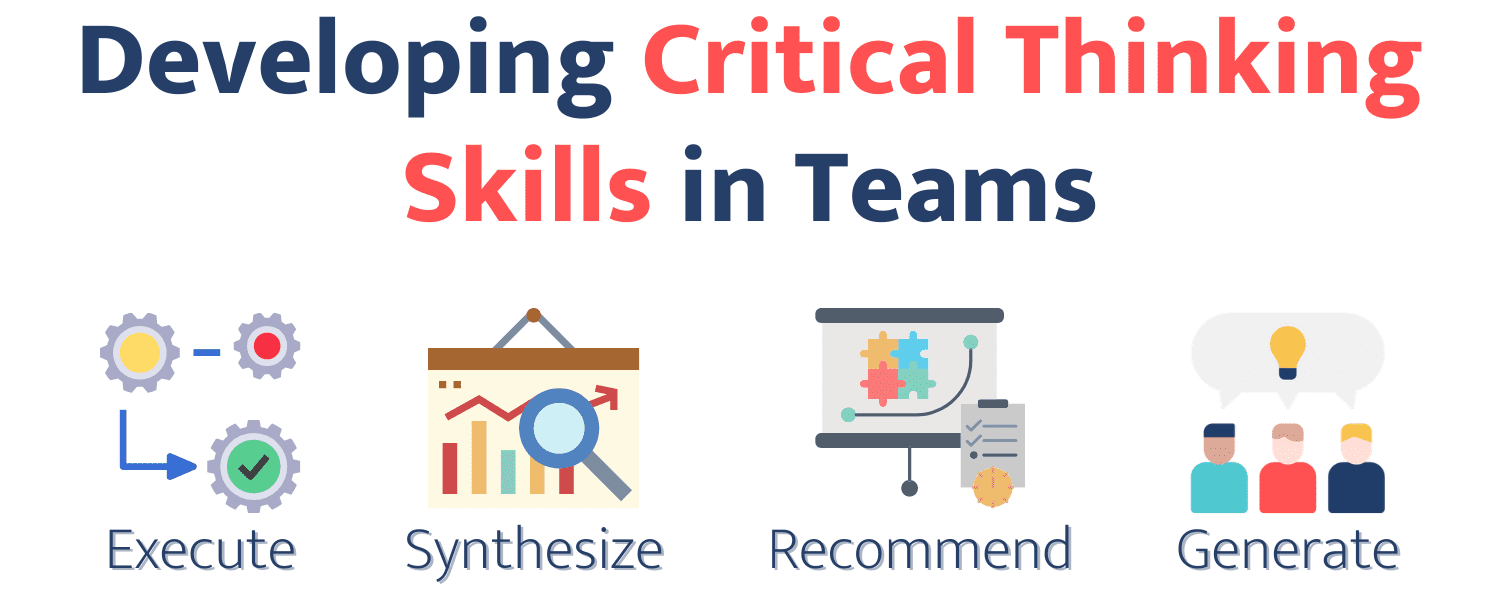Critical Thinking within a Teamwork Environment
Written by: Abigail Zhang and Sabrina Panjwani
Call of Duty, Soccer, and Case Competitions - What do these activities all have in common?
That’s right, teamwork!
The art of effective teamwork relies on the extensive skills and strengths of each team member and how they interplay with one another. One of these key skills is critical thinking, which is the most demanded within our current job market. According to a study conducted in 2016, 60% of the 63,924 managers surveyed said that critical thinking is the number one soft skill new graduates lack. Now, how could you build students’ critical thinking skills within their own team projects?
The Harvard Business Review breaks down four measurable phases that can help each member of a team develop the necessary critical thinking skills: execute, synthesize, recommend, and generate.
Execute
Converting instruction into action is the first step to mastering critical thinking as it incorporates three integral subsets: verbal reasoning, decision-making, and problem-solving. Team members must be able to fundamentally execute their tasks to completion at the expected standard of quality. In addition, communication is essential in this phase as it ensures transparency and productivity. Once team members are able to efficiently go above and beyond for an assignment, they are ready for the next phase.
Synthesize
In business, there is often a lot of data and information to sort through. Being able to efficiently identify important and relative information is critical. This skill, known as synthesis, is one that can be developed with time and practice. When students are working on a team project, they should practice identifying key insights and assessing the relative importance of these insights. Once that is done, they should be able to concisely communicate this information. This will set students up for success in the next phase, which is presenting a strong recommendation.
Recommend
After identifying what information is most important and relevant to the team project, students must present a recommendation. Recommendations should be well-founded and present knowledge of alternatives and solutions against potential downsides. All of this information should be communicated clearly and concisely. This will allow the whole team to practice sound business judgment that they can carry forward in executing future projects.
Generate
Lastly, translating ideas and vision into foreseeable projects requires experience and proficiency of the previous 3 phases. Open-ended thinking through brainstorming sessions helps a project or organization constantly improve with creative additions or solutions. It is recommended for students to engage in brainstorming discussions regularly to develop the team’s collective critical thinking skills.
Everyone is born with the basic ability to think, but not everyone knows how to think critically. However, it is a skill that can be developed and nurtured through practicing the above framework. Critical thinking skills are a key component to ideating and developing innovative solutions within a team environment. These skills transfer to the job market, where employers are constantly looking for problem-solvers and team players to join their companies.
To learn more about how professors can facilitate the development of critical thinking within a classroom, read more about Teaching Critical Thinking Skills (And How Technology Can Help).


